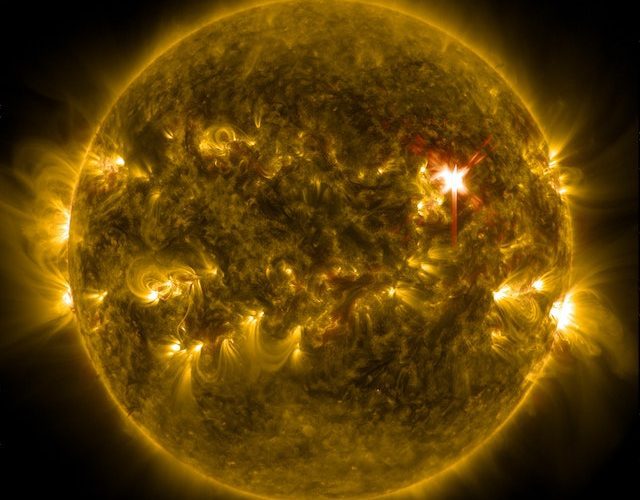The summer solstice is a wonderful time to connect with the natural world and experience the magic of the celestial events. While the specific planetary lineup during the summer solstice can vary from year to year, there are a few general astronomical phenomena that you can observe during this time.
1. Sun’s Position: The summer solstice marks the longest day of the year in the Northern Hemisphere and the shortest day in the Southern Hemisphere. It occurs when the Sun reaches its highest point in the sky, resulting in the maximum amount of daylight.
2. Moon: During the summer solstice, the Moon can be in various phases, depending on its position in its lunar cycle. It could be a full moon, new moon, or any phase in between. The moonrise and moonset times can add to the enchanting atmosphere during the solstice.
3. Planetary Alignments: While specific planetary alignments can vary, it’s always fascinating to observe the planets visible during the summer solstice. Some of the most prominent planets you might see are Venus, Mars, Jupiter, and Saturn. These planets are often visible to the naked eye and can create a stunning celestial lineup when they appear close to one another in the sky.
To experience the magic of the summer solstice and the planetary lineup, here are some steps you can take:
1. Find a Location: Look for a location with minimal light pollution, such as a park or countryside, to have the best visibility of the celestial events.
2. Check the Sky Charts: Prior to the solstice, consult online sky charts or astronomy apps to determine the positions of the planets during that time. These resources will provide you with accurate information on the planets’ locations and times of visibility.
3. Time Your Observations: Plan your observations for the solstice day, and be aware of the local sunrise and sunset times. Additionally, note the moonrise and moonset times to include the Moon in your experience if it is visible.
4. Be Prepared: Bring binoculars or a telescope if you have them, as they can enhance your viewing experience and allow you to see more details of the celestial bodies. Dress comfortably, carry a blanket or chair to sit on, and bring any necessary provisions like snacks and water.
5. Observe and Enjoy: Once you reach your chosen location, take some time to relax and enjoy the natural surroundings. Watch as the sky changes colors during sunset, and as the stars and planets gradually become visible. Take in the beauty of the celestial lineup and reflect on the wonders of the universe.
Remember that the exact planetary lineup and visibility will vary each year, so stay updated with astronomical resources or consult with local astronomy clubs to get the most accurate information for your specific location and date. Enjoy the magic of the summer solstice and the stunning celestial events it brings!












